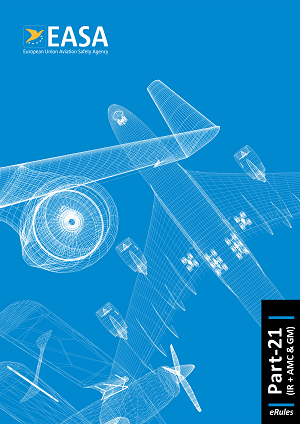Regulation (EU) 2022/1358
This Subpart establishes the procedure for issuing noise certificates to aircraft which conform to a type certificate that has been issued in accordance with this Annex.
Regulation (EU) No 748/2012
Any natural or legal person under whose name an aircraft is registered or will be registered in a Member State (Member State of registry), or its representative, shall be eligible as an applicant for a noise certificate for that aircraft under this Subpart.
Regulation (EU) 2022/1358
(a) Pursuant to point 21.A.203, an application for a noise certificate shall be made in a form and manner established by the competent authority of the Member State of registry.
(b) each application shall include:
1. with regard to new aircraft:
(i) a statement of conformity:
— issued under point 21.A.163(b); or
— issued under point 21.A.130 and validated by the competent authority; or
— for an imported aircraft, a statement of conformity issued under point 21.A.163(b) or, in the case of an aircraft imported in accordance with Article 9(4) of this Regulation, a statement signed by the exporting authority that the aircraft conforms to a design approved by the Agency; and
(ii) the noise information determined in accordance with the applicable noise requirements;
2. with regard to used aircraft:
(i) the noise information determined in accordance with the applicable noise requirements; and
(ii) historical records to establish the production, modification, and maintenance standard of the aircraft.
(c) Unless otherwise agreed, the statements referred to in point (b)(1) shall be issued no more than 60 days before presentation of the aircraft to the competent authority of the Member State of registry.
21.A.207 Amendment or modification
Regulation (EU) No 748/2012
A noise certificate may be amended or modified only by the competent authority of the Member State of registry.
21.A.209 Transferability and re-issuance within Member States
Regulation (EU) No 748/2012
Where ownership of an aircraft has changed:
(a) if the aircraft remains on the same register, the noise certificate shall be transferred together with the aircraft; or
(b) if the aircraft moves to the register of another Member State, the noise certificate shall be issued upon presentation of the former noise certificate.
21.A.211 Duration and continued validity
Regulation (EU) 2022/201
(a) A noise certificate shall be issued for an unlimited period of time. It shall remain valid subject to compliance with all the following conditions:
1. the aircraft continues to comply with the applicable type design and continued airworthiness requirements; and
2. the aircraft remaining on the same register; and
3. the type-certificate or restricted type-certificate under which it is issued not being previously invalidated under point 21.A.51;
4. the certificate has not been revoked by the competent authority under point 21.B.65, or surrendered by the certificate holder.
(b) Upon surrender or revocation, the certificate shall be returned to the competent authority of the Member State of registry.
